The Gateless Gate and the door of Mu!: “Does a dog have Buddha Nature?” and other breakthrough koan riddles
The Gateless Gate (or Barrier) is a compilation of 48 Zen koans. Koans are paradoxical, puzzling riddles, statements, or even short pieces of prose that are a fixture in Zen Buddhism; they’re meant to entice those who encounter them...
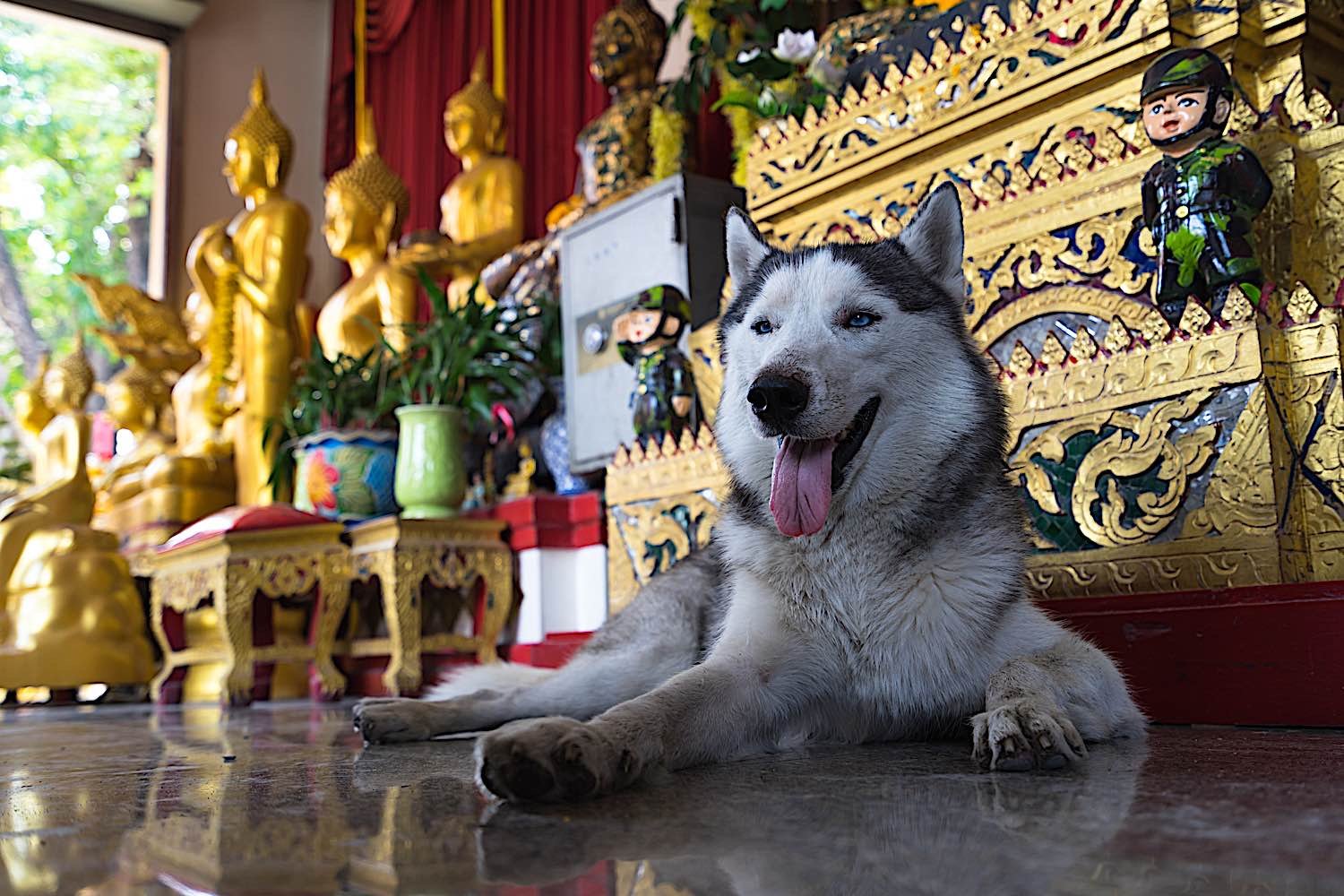
The Gateless Gate (or Barrier) is a compilation of 48 Zen koans. Koans are paradoxical, puzzling riddles, statements, or even short pieces of prose that are a fixture in Zen Buddhism; they’re meant to entice those who encounter them to let go of their conventional ways of thinking, ponder the nature of the koan, and try and gain some insight into their deeper meaning and real-life applications.
We look at some of the koans in this article and discuss what their meanings possibly might be — or whether we should even try to “solve” the “riddles.”
By Dave Lang
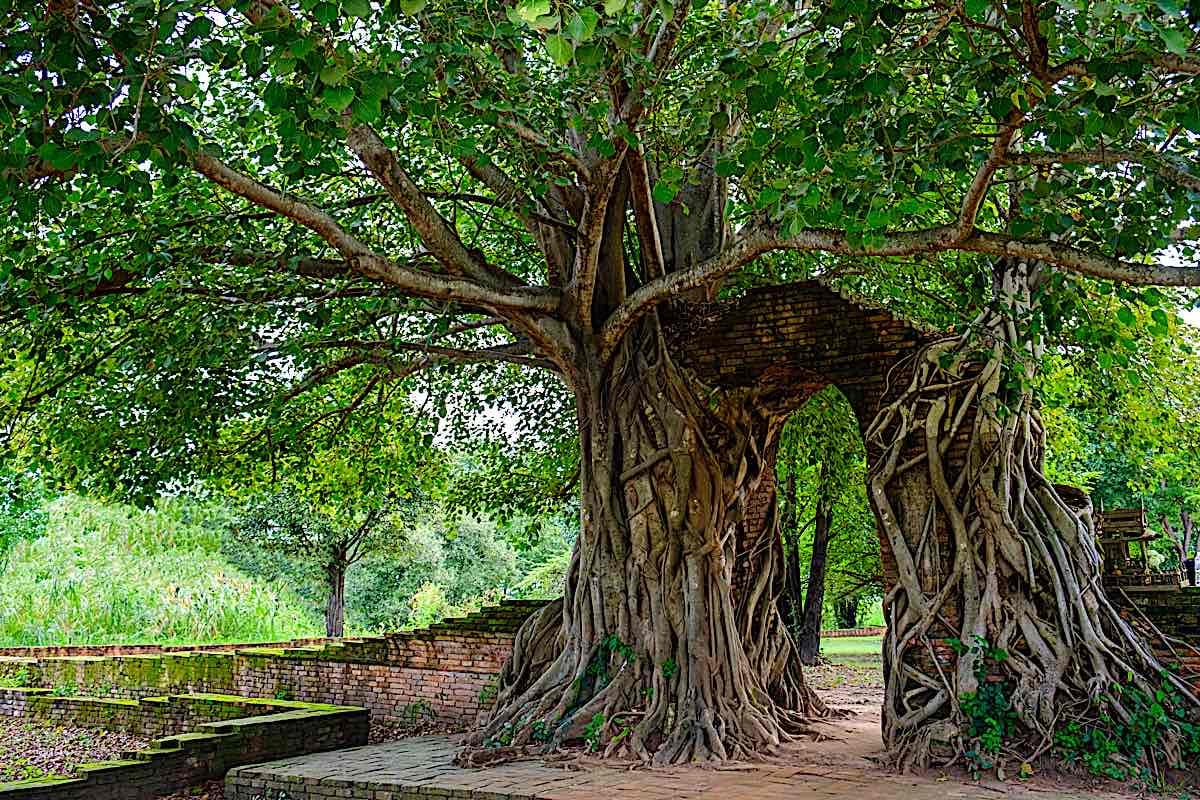
The Gateless Gate, here symbolized by the Bodhi tree grown into the shape of a gate. Nature and trees have always been important in Buddhism. This sacred Bodhi tree, the Gate of Time in Thailand, is a Bodhi Tree that grew into the shape of gate at Wat Phra Ngam Phra Nakhon Si Ayutthawa. Bodhi Trees are especially sacred to Buddhists because Buddha sat under the Bodhi Tree to meditate, determined to stay in that spot until he was Enlightened. After his Enlightenment, he remained in the jungles and forests, meditating and teaching with his monks.
When is a gate gateless?
In Mandarin, The Gateless Gate is 無門關 (Wúménguān), and in Japanese is: 無門関 (Mumonkan). The compiler of these koans was the Chinese Zen master Wumen Huikai (or Mumon Ekai in Japanese).
The name “The Gateless Gate” is a bit of a misnomer, but the classic Zen text is so famously called that in English that to change its name now wouldn’t make sense.
One way of reading the title is to take it at face value; the book is ‘Wumen’s Gate/Barrier’, the gate belonging to Wumen. However, the first word in the title, Wumen’s own name, means ‘lacking some form or means of entry’. The second word, guan, means barrier, checkpoint, or wall – some form of boundary where passage through is controlled. Together they mean a wall that has no door or a boundary where there doesn’t seem to be a point of entry.
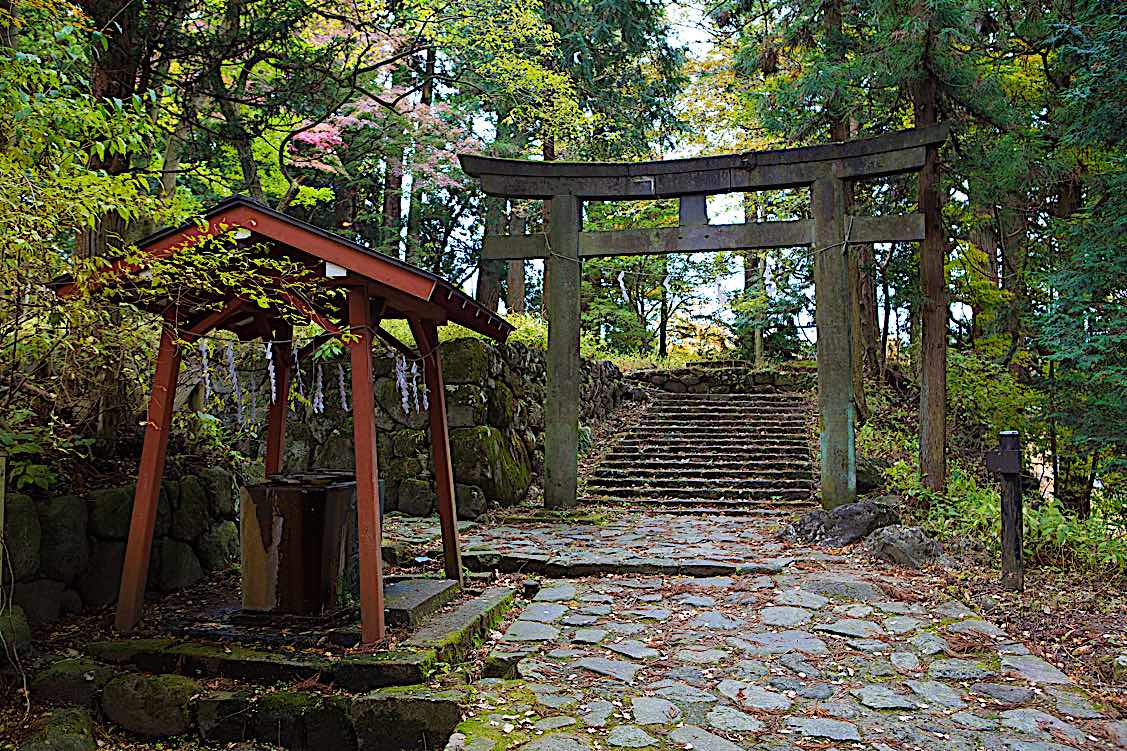
Temple in Japan. Beauty, simplicity and focus are always themes in Japanese temples.
In the text’s preface, Wumen explained how the way to access Buddha’s teaching was by entering a doorless wall.
He says that[1]:
“The Great Way has no gate,
A thousand roads enter it.
When one passes through this gateless gate,
He freely walks between heaven and earth.”
Of course, one can’t simply pass through a wall without some means of doing so, and if there is no gate it seems impossible. There are many opinions on how one might think of accomplishing a task, for example thinking about yourself as existing on both sides of the wall.
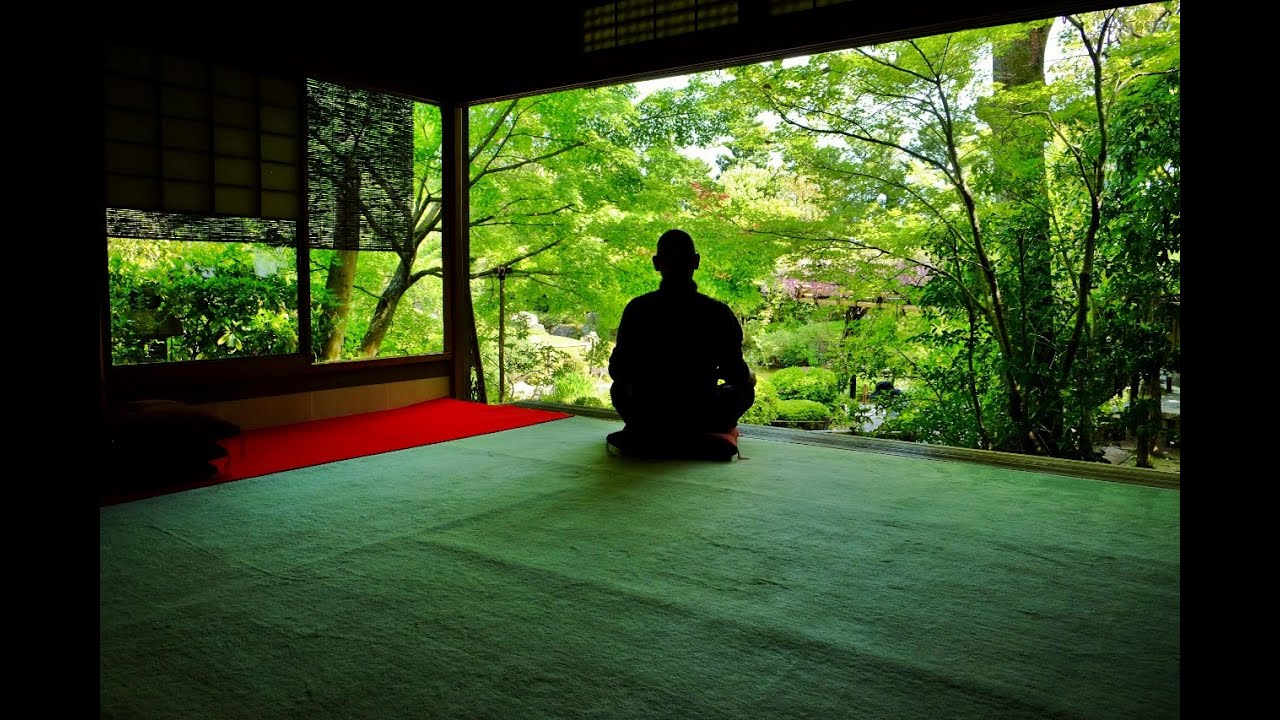
Solving the koan misses the point
But trying to solve the conundrum is completely missing the point; it’s not about how to get through the wall or barrier, but about realizing that there are other ways to approach everything, even the most mundane aspects of life (like going through a door).
The very concept of naming the compilation in this way reflects the nature of these koans and their purpose, which is provoking one to contemplation and finding great enlightenment through simple stories, riddles, and statements. While the koans themselves are bite-sized, the thought that you can find yourself expanding on them will surprise you. Wumen himself spent 6 years on just one of them until he reached great enlightenment.
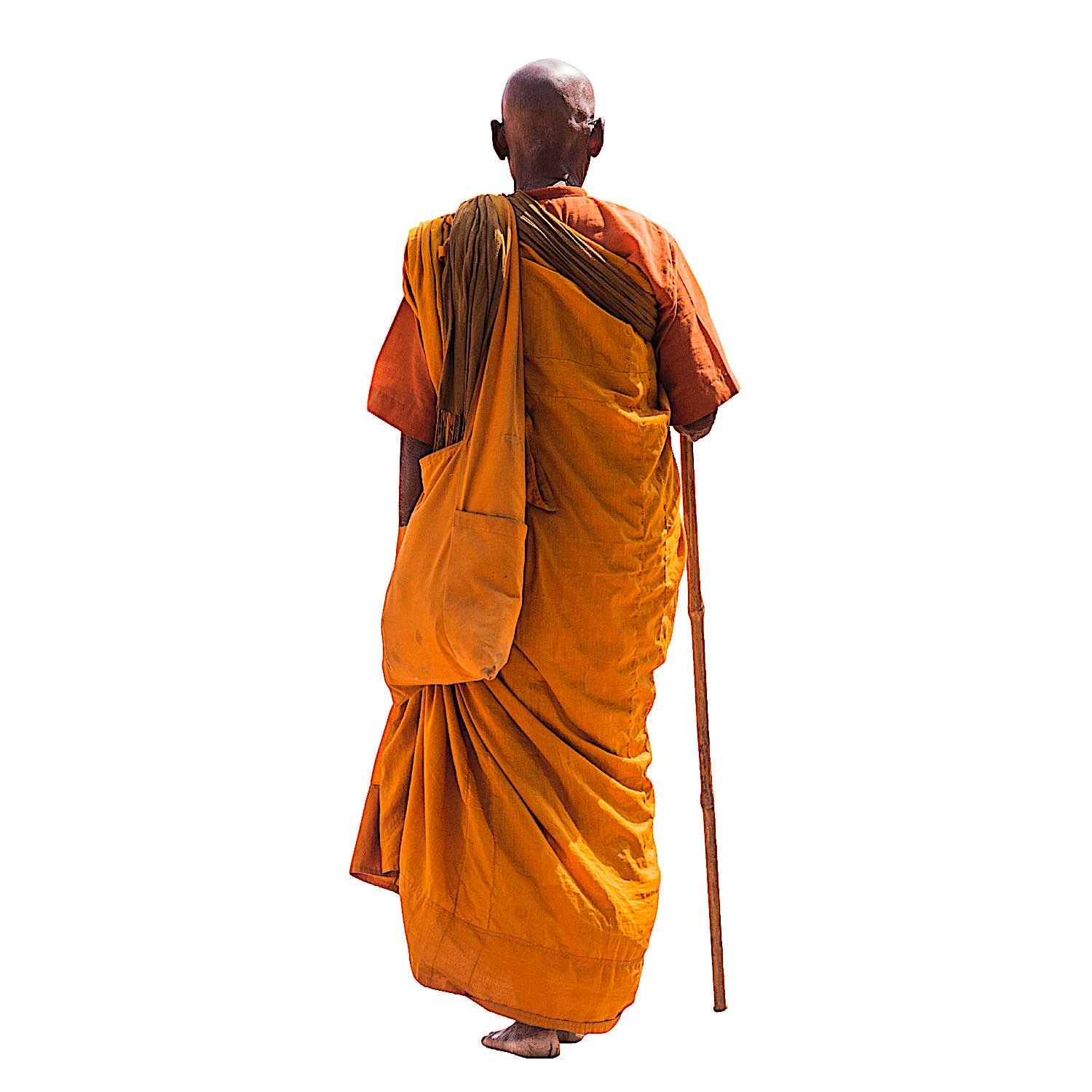
Which path will you walk? All Buddhist paths ultimately lead to one destination.
A koan compilation spanning centuries
The koans found in The Gateless Gate were recorded over many centuries. The majority of them are actually bits and pieces of real conversations between Zen teachers and students, and each lead to some facet of dharma.
Buddhism teaches to go beyond conventions and the shackles of what people have been taught to view as daily life (‘it’s just how things are’). Puzzling out the koans themselves does not necessarily grant enlightenment directly, but they are a powerful means of teaching people to break out of the boundaries that are set by rigid, conceptual thought. They also allow one to become more familiar with the teachings of Buddhism on a deeper, more intimate and personal level.
They are like a glimpse of the sun when it hides behind clouds, a realization that there is so much more than previously known and what that ‘something more’ might be.

Does the dog have Buddha Nature is one of the “stories” in The Gateless Gate. The answer “Mu!”
The “Mu!” Koan
The first and perhaps most famous koan in The Gateless Gate is the Mu koan. It is formally known as Zhaozhou’s Dog [2], and goes:
A monk asked Master Zhaozhou, “Does the dog have Buddha Nature?”
Zhaozhou replied, “Mu!”
“Mu” here means no or a negative in Japanese. In Chinese it would be “Bu”, or “Wu”. Zhaozhu was a historical teacher who lived from 778-897 A.D. He had a quiet way of teaching and said a lot in very few words.
All beings have Buddha Nature
Mahayana Buddhism teaches that all beings (and not just all humans) have the Buddha-Nature as their fundamental nature. Therefore, the obvious answer to the monk’s question is yes, but the answer of ‘no’ was far more valuable and meaningful.
The fact that the monk asked such a question in the first place shows how conventional and narrow his thinking was. Although he probably had heard at that point that the fundamental nature of all beings was the Buddha-nature, he took it to mean humans only.
For an in-depth feature on Buddha Nature>>Mu contains at least three “lessons”
The koan then, short as it is, likely offers up at the very least three lessons.
The first is that even when you think you know something, it is very likely that you do not. The student is in this koan was trapped by the boundaries of conventional thought, as we all are.
The second is that koan study (and all study, truthfully) is not a DIY project. The monk, as basic as his question might have been, was displaying the right attitude by checking his knowledge against his teacher’s. It’s common to believe that our understanding of a concept is right, but by asking our teachers, we can better gauge our bearings.
And finally, the Mu koan is far more than just a debate on whether or not sentient beings are the only ones who have the Buddha-nature. It is an exploration into changing one’s perception and bringing a student to realization.
What is Buddha and other Koan riddles that break the mind>>>>The Buddha’s flower
One of the sweetest and most beautiful koans in The Gateless Gate is the sixth. Called The Buddha’s Flower, it goes:
Once upon a time when Buddha was in Grdhrakuta mountain, he twirled a flower in his finger and held it before his gathering.
Everyone was silent. Only Maha Kashapa wholeheartedly smiled.
Buddha said, “I have the eye of the true teaching, the heart of Nirvana, the formless form, the mysterious gate of Dharma. Beyond the words and beyond all teachings to be transmitted, I now pass this on to Maha Kashapa.” [3]
This koan seems to tell of the Buddha choosing his successor simply because of a smile. For many who read this koan, the first question that they ask is “did this really happen?”, when the historical veracity of the story doesn’t matter in the slightest.
Understanding Buddha’s teachings without words
This koan asks us a question instead. Who understands the Buddha’s teachings best without words? Conventional ways of thinking tell us that in order to make someone understand us, we must speak to them.
It’s certainly commendable to be well-spoken and have a good command of language, but yet relying solely on language to communicate limits us. In the entire collection of people in front of the Buddha, only one smiled at the beautiful flower he twirled in his fingers.
The sangha gathered in this koan was desperately looking to learn something from the Buddha, some spoken wisdom, some great secret, a new pearl of truth to meditate upon. They were focused only on learning from him and even then only in one specific way – by listening to him speak.
And yet, all that the Buddha did was twirl a flower. In doing so, he was appreciating the flower and its beauty. This was a complete act in itself. It had no other meaning, it had no secret wisdom. The Buddha was simply appreciating the beauty of the flower because he could.
Maha Kashapa understood this. The Buddha twirling the flower was an invitation to join him in enjoying the flower’s beauty, an invitation to see with your eyes and feel joy in your heart. It was an invitation to realize that everything that exists is whole and complete by itself, but doesn’t exist in a vacuum.
The flower, the smile, the twirling fingers, the congregation watching. They were all connected. And yet only Maha Kashapa accepted the invitation.
His smile at the Buddha showed that he too saw the beauty of the flower and joined the Buddha in appreciating it. He said not a single word, because he didn’t have to. The Buddha didn’t need to ask if anyone joined him, because he could see, and only Maha Kashapa did.
In a single moment of noticing, the Buddha invites us to go beyond the conventions of communication and to connect with those around us. This invitation is extended to all of us, to connect to all that is and all that will be by seeing rather than just looking.
Washing the bowl
The seventh koan in The Gateless Gate reads:
A monk told Zhaozhou, “I have just entered this monastery. I beg you to teach me.”
Zhaozhou asked, “Have you eaten your rice porridge?”
The monk replied, “I have.”
“Then,” said Zhaozhou, “Go and wash your bowl.”
At that moment the monk was enlightened.
[4]
This koan doesn’t seem to make sense at first. The monk seeks knowledge specifically pertaining to betterment and the secrets to enlightenment, and yet he is being told to wash his bowl. However, Zhaozhou does in fact teach the monk and give him exactly what he asks for. He teaches him many things within the simple direction of “go and wash your bowl”.
The monk becomes enlightened when he does as he is told to because he understands what is behind what Zhaozhou has said.
There are many good deeds that we can do in our lives, but they don’t just depend on our intention. Rather, they depend on circumstance and timing as well. The monk here wishes to gain enlightenment by learning all of the many wisdoms and teaching of the great Zhaozhou, but he had only just gotten to the monastery.
So instead, he must focus on doing what he can do right at that moment, and that was to wash his bowl. In the first place, it was something that he had overlooked. But however small, it was the right thing to do. Zhaozhou was telling the monk that he can take his journey of a thousand steps with this first, smallest one.
Additionally, this is the true meaning behind Zen. It isn’t doing huge, extraordinary things and accomplishing great feats. Rather, it’s the everyday actions that we take that can change everything and have the most impact.
The monk had probably travelled far and wide to see Zhaozhou, but had failed to realize he could have worked on smaller, more immediate and available things, either instead of travelling so far or while doing so.
This is why Wumen comments,
“If one realizes that it’s stupid to search for a fire with a lantern light, the rice would not take so long to be done”.
If the monk had realized that he could begin to accomplish his goals all along, then he would not have forestalled his journey to enlightenment for such a long time.
The invitation to see
The Gateless Gate is meant to provoke us to see the world around us without the shackles of modern, conventional thought. By seeing clearly, we can begin to divulge true meanings and live in a better, more honest and open way.
The collection of koans contained within offer wisdom on a vast range of topics, and with careful thought and multiple visits, can often provide new information that went previously unnoticed.
The additional comments and thoughts that Wumen provides add more layers of riddles, puzzles, and ultimately, wisdom. This compilation is a timeless classic filled with thought-provoking and insightful koans, but there’s only so much that can be covered in one article. Make sure to keep an eye out for future articles where we talk about more koans.
Until then, what are your personal takeaways from the koans covered here? Let us know in the comments below.
Notes
[1] [2] [3] [4]
Gateless Gate (pdf)>>
Other Sources
Gateless Gate >>
What is Mu in Zen>>
Flower Sermon>>
Buddha holds up a flower>>

 Hollif
Hollif 
































